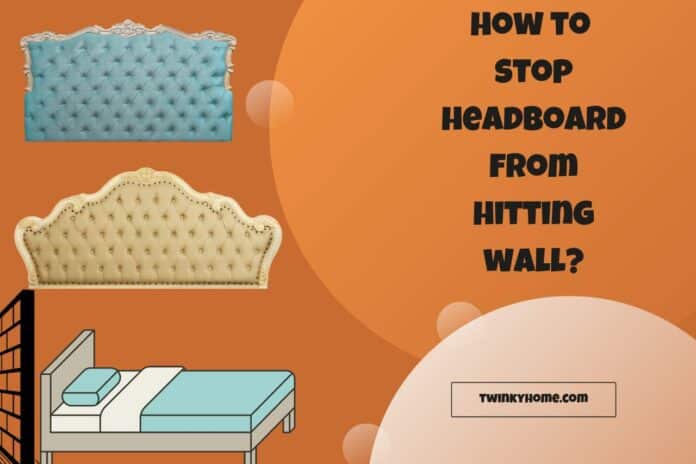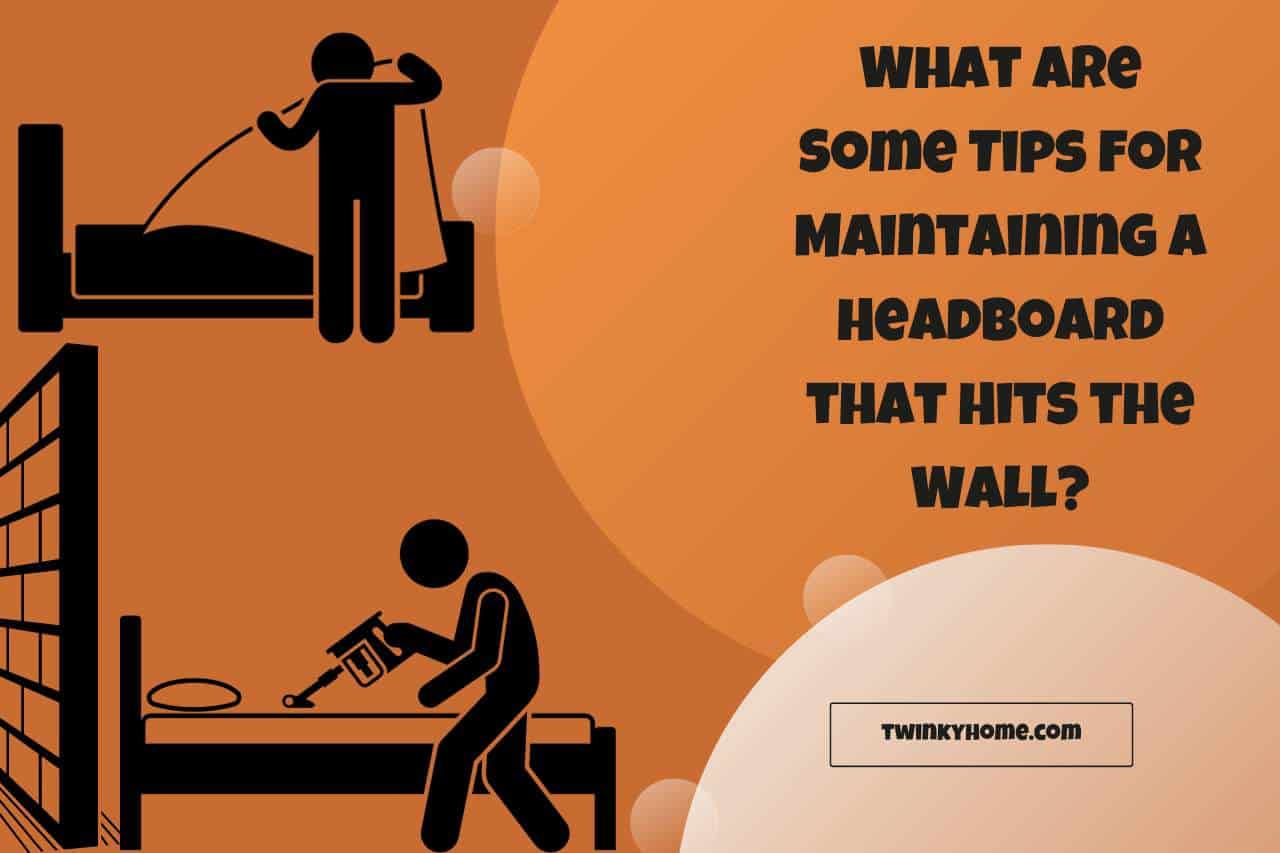If you’re struggling with “how to stop a headboard from hitting the wall”, we are happy to announce that you’re not alone. Headboards moving and creating unsightly marks is a common issue many homeowners face. This guide will dig into practical strategies, from using furniture pads to clever DIY hacks, ensuring your nights remain peaceful and your walls unscathed. Let us dive in to safeguard both your rest and your interior aesthetics. As we all experience in our day-to-day lives, headboard movement can result in noise disturbances, wall damage, and badly interrupted sleep. The easiest way to stop a headboard from hitting the wall is to place buffer materials between them or firmly secure the headboard to the bed frame. This reduces movement and minimizes noise or potential wall damage.
How to Stop the Headboard from Hitting the Wall?
Here are a few simple steps to prevent the headboard from banging against the wall, bringing great relief to us all!
-
Step 1: Adjust Bed Placement
You have to move your bed a few inches away from the wall, which can provide a necessary buffer and minimize direct contact.
-
Step 2: Sturdy Fixture
In this step, ensure that the headboard is tightly bolted or attached to the bed frame. A wobbly headboard is more likely to make contact with the wall.
-
Step 3: Install Wall Bumpers
Wall bumpers, often made of rubber or foam, can be stuck to the corners or flat areas of the headboard. They cushion the wood or metal from directly hitting the wall.
-
Step 4: Non-Slip Pads
Place these beneath the bed legs. Will such a simple addition reduce the struggle? Yes, they can grip the floor and stabilize the bed, reducing overall movement.
-
Step 5: Use Area Rugs
A rug underneath the bed can act as an additional buffer, dampening movement and anchoring the bed’s position.
-
Step 6: DIY Cushioning
Use materials like pool noodles, cut to size, or felt pads, and attach them to the back of the headboard. Yes, these DIY solutions can also absorb shock effectively.
While it may seem like a minor concern, a constantly banging headboard can disrupt sleep and damage walls. The critical thing is implementing these straightforward solutions not only ensures tranquility but also prolongs the lifespan of your wall paint and plaster.
How Do I Attach a Headboard to the Wall?
The best method to attach a headboard to the wall involves using sturdy brackets or a French cleat system to ensure it remains secure and aligned.
Following are the steps to mount a headboard to the wall:
- Choose the Right Spot: Position the headboard where you want it on the wall, marking the top edge with a pencil. Here, use a level to ensure straight placement.
- Find the Studs: Use a stud finder to locate the wall studs. Mark their locations; they’ll provide the best support.
- Select Suitable Hardware:
- Brackets: If using L-brackets, attach one side to the back of the headboard and the other to the wall stud.
- French Cleat: This is a pair of interlocking wooden or metal strips. Attach one to the headboard and the other to the wall, ensuring they align perfectly.
- Secure the Headboard: Lift it, positioning it so that the brackets or cleat on its back align with the corresponding parts on the wall. Firmly secure them together.
- 5. Double-check: Gently move the headboard to confirm it’s securely fastened.
Attaching a headboard to the wall can elevate your room’s aesthetic and offer excellent stability. First, ensure you have the appropriate tools and hardware on hand, and always prioritize safety by enlisting a helper or consulting a professional if in doubt.
How Can Wall Damage from a Moving Headboard Impact Your Living Space?
Wall damage from a moving headboard can significantly detract from the aesthetics of your living space, creating unsightly marks and potential structural concerns.
Impact on Your Living Space can be listed as Aesthetics, Structural Concerns, Cost Implications and Decreased Property Value.
- Aesthetics: Unsightly scratches, dents, and holes can mar the look of your wall, detracting from the overall ambience of the room.
- Structural Concerns: Frequent movement might weaken the wall over time, leading to larger cracks or compromised wall integrity.
- Cost Implications: Repairing wall damage isn’t just about aesthetics. It can lead to unplanned repair costs and might even require professional intervention.
- Decreased Property Value: If you’re considering selling or renting out your space, visible wall damage can decrease the property’s value or appeal to potential buyers or renters.
Can Rugs or Anti-Slip Floor Solutions Make a Difference?
Certainly, rugs or anti-slip floor solutions can significantly prevent unwanted movement of furniture, including headboards, and ensure safety.
You will come up with the following benefits if you are using rugs and anti-slip solutions:
- Traction and Stability
- Floor Protection
- Safety
- Aesthetics
The best way to maintain a headboard that hits the wall is to ensure it remains stationary, reducing wear on both the wall and the headboard itself.
What are Some Tips for Maintaining a Headboard that Hits the Wall?
Using the tips mentioned below, you can prolong the life of your headboard and keep your walls pristine.
- Attach soft felt pads or rubber bumpers to the headboard’s back. This minimizes abrasion against the wall.
- Ensure all screws and attachments are tight. Over time, they can loosen, causing the headboard to wobble.
- Place these pads beneath the bed’s legs to prevent the entire bed frame from shifting and pushing the headboard against the wall.
What are Some Common Issues with Headboards Hitting Walls?
Addressing the following common Issues, we promptly ensure a serene and damage-free bedroom environment.
- Wall Damage: Persistent hitting can lead to dents, paint chipping, or wallpaper tearing.
- Noise: The repetitive thud can be disruptive, especially during the night.
- Headboard Wear: The headboard’s finish can degrade, leading to splinters or rough patches.
- Instability: A moving headboard can weaken its fixtures over time.
Necessary; Regular Checks: Periodically inspect the headboard and wall for signs of wear or damage. Early detection can prevent more significant issues.
FAQ
How Do I Use Rubber Bumpers to Stop My Headboard from Hitting the Wall?
To use rubber bumpers to stop your headboard from hitting the wall, you can follow these straightforward steps:
- Clean the Area: Ensure the back of your headboard and the wall are free from dust and dirt for better adhesion.
- Select the Right Bumpers: Purchase self-adhesive rubber bumpers from a hardware store. Choose a size suitable for your headboard’s weight and thickness.
- Position the Bumpers: Place the bumpers at the top and bottom corners of the headboard. Consider placing them in the center for added protection.
- Press Firmly: Once positioned, press firmly on each bumper for a few seconds to secure its placement.
- Test the Fit: Gently push the headboard against the wall to ensure bumpers provide enough cushion and the headboard no longer makes direct contact with the wall.
How Do I Use Door Stops to Stop My Headboard from Hitting the Wall?
To use door stops to stop your headboard from hitting the wall, you’ll want to follow these practical steps:
- Choose Suitable Door Stops: Opt for rubber or silicone door stops with a wedge or D-shape design. Their non-slip nature provides good friction against the wall.
- Position the Headboard: Pull the headboard slightly away from the wall to create enough space to insert the door stops.
- Place the Door Stops: Slide the door stops between the headboard and the wall, preferably towards the top corners where the pressure is most exerted. The broader side should face the wall, and the tapered end should be under the headboard.
- Adjust for Fit: Depending on the gap’s size, you might need to push the door stops further to ensure they’re snug and effective.
- Test Stability: Give your headboard a gentle push to make sure it doesn’t contact the wall.
How Do I Use Furniture Pads to Stop My Headboard from Hitting the Wall?
To use furniture pads to stop your headboard from hitting the wall, we can recommend the best methods involve the following steps:
- Select the Right Pads: Choose thick, adhesive-backed felt or rubber furniture pads. These pads will cushion and prevent direct contact between the headboard and the wall.
- Clean the Surface: Before attaching the pads, ensure the back of the headboard is clean and dust-free to ensure strong adherence.
- Position the Pads: Attach the pads to each top corner of the headboard and, if necessary, at the center. These are the primary contact points when the headboard moves.
- Press Firmly: Once positioned, press down firmly on each pad to ensure they’re securely attached.
- Reposition the Headboard: Move the headboard back towards the wall, ensuring the pads create a buffer between the two surfaces.
Watch this one,
Video Credits – Pretty Honest Reviews








![OGX Biotin And Collagen Shampoo Review [Updated One] Ogx Biotin And Collagen Shampoo Review](https://twinkyhome.com/wp-content/uploads/2022/03/Are-chicken-Super-Noodles-vegetarian-1-100x70.jpg)